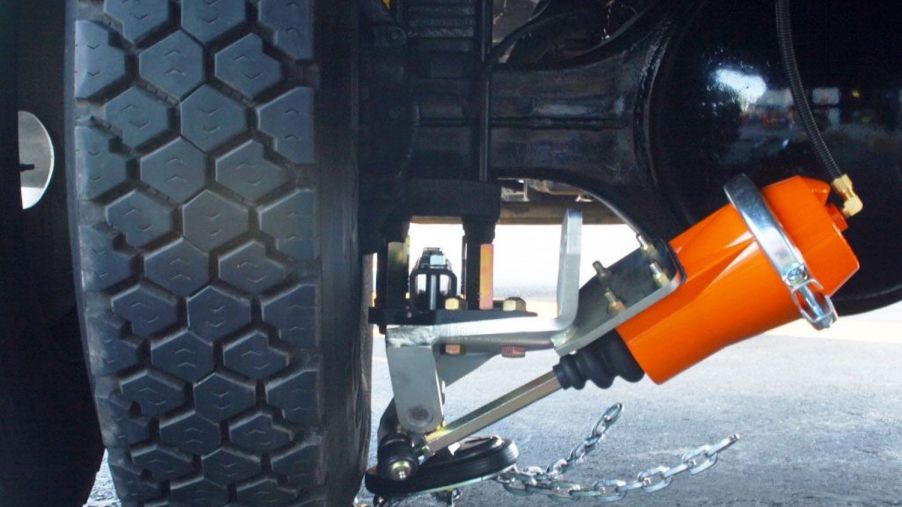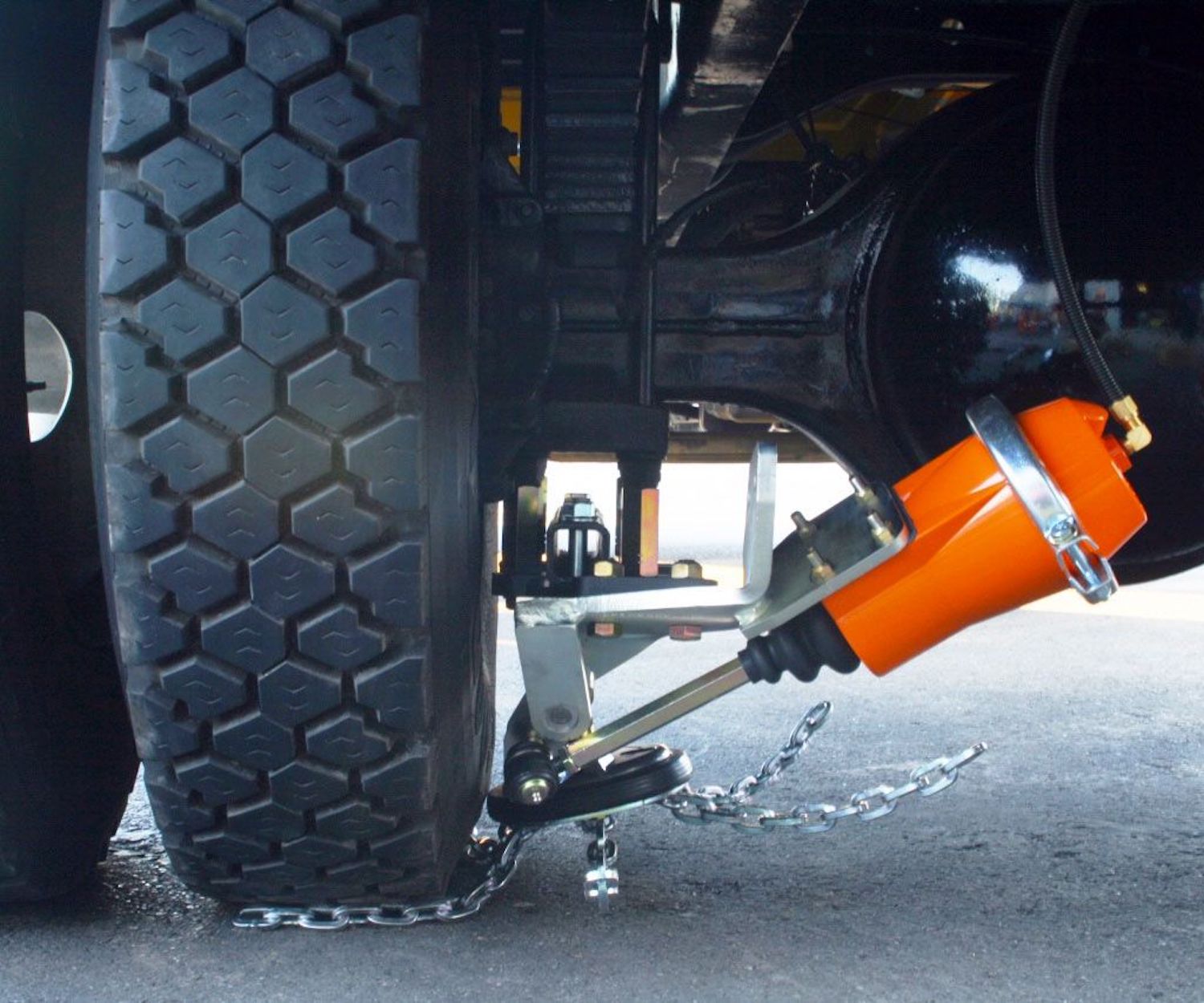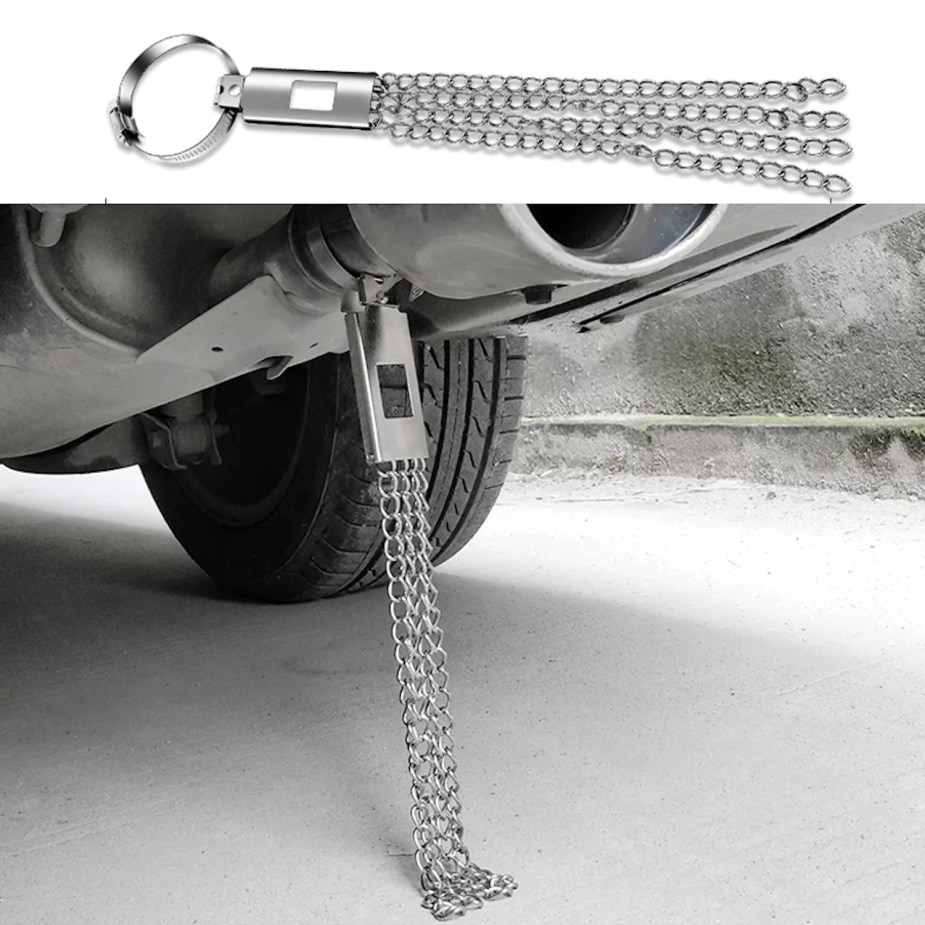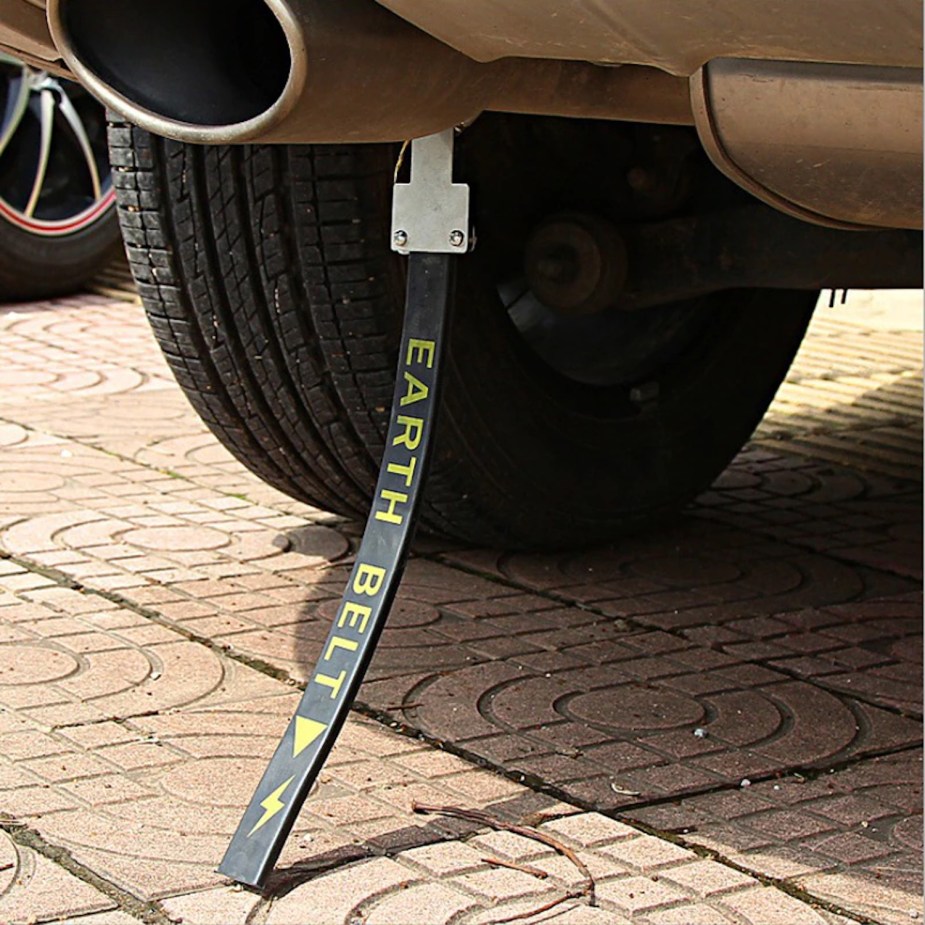
Why Do Some Trucks Have Chains Dragging Along the Road?
Have you ever noticed trucks driving down the road and dragging a chain along the pavement? There are multiple possible reasons for this: some trucks use chains to release static electricity. Others have automated tire chains hanging from their frames.
What are automatic tire chains?
If you are driving behind a truck and see several strands of chains hanging from the left and right sides of its frame, these are likely automatic tire chains. If the weather is clear, these automatic tire chains should not be touching the pavement. But they will hang lose and may even rattle against one another as the truck drives down the road.

If the road conditions become dangerous, the driver of the truck can deploy these automatic tire chains /snow chains with the press of a button. The truck uses compressed air to swing an arm down to wheel. These arms end in a spinning head with a series of lengths of chain.
Once these spinning heads are pressing against the tire, the motion of the tire spins them, and the resulting centrifugal force flings the lengths of chain between the tire and the road. As the truck drives over these lengths of chain, the links provide excellent traction, even in icy conditions.
Can dragging chains on the pavement discharge static electricity?
Many vehicles with sensitive electronics–such as ambulances–once dragged grounding chains to discharge static electricity. In addition, vehicles carrying highly flammable contents, such as fuel trucks, dragged chains. Today the practice is less common and experts debate its effectiveness.

A metal vehicle driving down the road will collect static electricity. This is because electrons in the air will be attracted to it and enough of them give it a negative charge–according to Motor How To. When it comes to your personal vehicle, this static charge chan be amusing if it zaps someone reaching for the door handle. But in other vehicles it can be dangerous.
Ambulances carry lifesaving electronic equipment. Enough static electricity could compromise these electronics. Therefore, some ambulances have a length of chain connecting their frame and the pavement.
Fuel trucks and trucks carrying other flammables run the risk of combusting. For this reason, those transporting hazardous materials are especially cautious of static electricity. This is why many hazardous material haulers have a grounding chain dragging on the pavement.
Why don’t trucks drag static electricity chains anymore?
According to The Oklahoman, dragging chains beneath trucks was once very common but is now rare. Trucks are still required to use a chain or other device to ground, but not all the time.

Modern science has concluded that fuel trucks are not in danger of combusting if they don’t drag a grounding chain down the road. Today, regulators require trucks shipping hazardous materials to ground the truck’s chassis while loading and unloading. But truckers don’t have to drag a grounding chain by law.
For this reason, if you see a chain rattling around beneath a truck or ambulance, it is probably part of the automatic tire chain system. If the pavement is dry and clear and a chain is dragging on the ground, something may be wrong.
Next, find out why some semi truck tires do not touch the ground or watch automatic tire chains in action in the video below:
https://www.youtube.com/watch?v=x2IQNsLuikw



